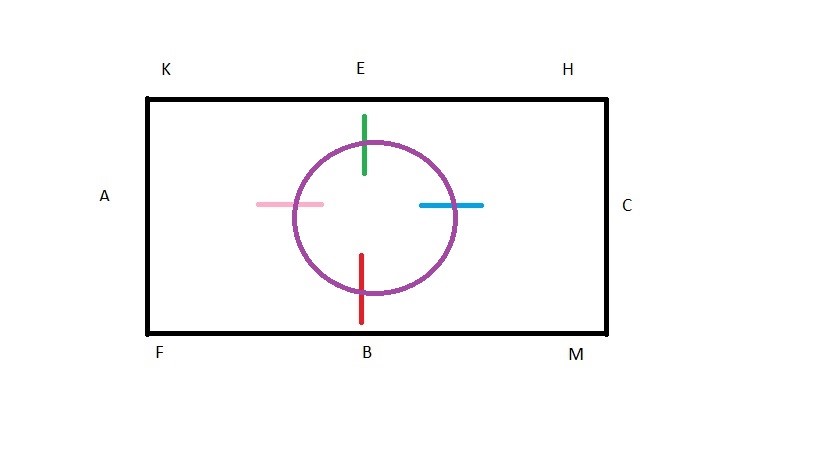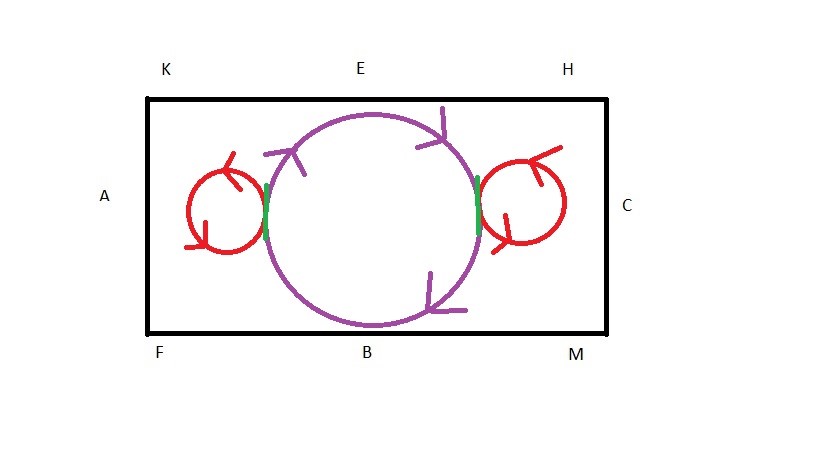
Here are some of our favourite flatwork exercises for horses to help keep things fun and interesting for you and your horse. Depending on where you school your horse, these exercises can be done in an arena or in a field. The diagrams used are roughly based on a 20 x 40-metre arena, but obviously, you can adapt to use in the area you’re working with.
Polework exercises for horses
This exercise helps get (and keep) your horse’s attention. If your horse has a tendency to get bored doing simple polework, this polework exercise is a great one to try to keep the focus on you and the poles on the ground. To set up this polework exercise, you'll need four poles. It can be done anywhere in the arena, if you have arena markers, we like to place the poles near B and E, as this means that you don’t use the fence as much. You can mix up this polework exercise by doing it at either end of the arena. Place the poles in a clock face, one at 12, one at 3, one at 6 and another at 9. It should look like this:

This exercise can be ridden in walk, trot, or canter if you and your horse are comfortable cantering over poles on the ground. To start, ride a 20 m circle at E. This should take you around the outside of the poles.

Once you’ve completed the 20 m circle, push your horse inwards to create a 15 m circle, which should bring you over the middle of each of the poles.

Next, shrink the circle again to be 10 m, which should bring you around the inside of the poles. Your horse will go over some of the poles as the circle shrinks. This polework exercise for horses makes them think about where their feet are and it also keeps them guessing where you want to go next meaning their focus will be on you as the rider.

Then to complete the exercise, gradually increase the size of the circle again until you’re riding a 20 m circle, going over the poles at random as you make the circle bigger.
For more polework exercises for horses, check out this blog where dressage rider Jess Dunn uses raised poles to improve her horse's suppleness.
Canter exercises for horses
This exercise also uses a 20 m circle in the centre of the arena. This can be really useful for getting your horse to pick up canter on the correct lead leg and it also keeps them on their toes! Start with a 20m circle at E or B in trot. (Shown in purple on the diagram). When you get to the points of the circle that would be at 3 or 9 on a clock, as highlighted in green, change the direction of your circle and move onto a 10/15 m circle in the opposite direction.

When you come back to the 20 m circle, change your bend again and re-join the 20 m circle. When you reach the second green marker, repeat. Once you’ve done this a few times, repeat, but when you change the bend to re-join the circle, pick up canter on the correct leading leg to continue on the 20m circle. You can then either go large or continue on the circle and repeat. Make sure to switch up when you re-join in trot and when you pick up canter to make sure your horse is on its toes! You can also circle more than once on the 10/15 m circle if you want to work on your horse's balance. The aim is to keep the cadence and balance as you move your horse onto the smaller circle and appreciate that when you first start doing this exercise it may take your horse a while to supple up and relax into the new bend.
Make sure you do this exercise evenly on both reins so your horse learns to supple both ways and understands your leg aids. Start on the rein your horse is more comfortable with to give them confidence in the exercise.
Simple flatwork exercise for horses
Finally, a simple flatwork exercise for horses. Ride a figure of eight at each end of the arena between K and F, or H and M, with 10 m circles. You can add in transitions between walk and trot as you switch direction if you want to make it more complicated. Start this exercise in walk and progress to trot when you and your horse are ready to make this exercise harder and if you need to, use the long side to get to grips with this exercise, to begin with - go for it!

We hope you've found this blog on polework and flatwork exercises for horses useful. For more dressage tips and advice check out our Dressage Debunked series with dressage rider, trainer and judge Steph Croxford.
